By: Dr. Elizabeth Eggert

Cavities are miserable and, as adults, most of us take every precaution to avoid them. It’s important to be aware that kids are just as susceptible to their presence and their fury. In fact, cavities affect more kids than asthma and diabetes. Let’s take a look at ways that kids develop cavities, how cavities in kids are treated and best yet, how to help your children prevent them.
COMMON CAVITY CULPRITS
 Paul Casamassimo, D.D.S., professor of pediatric dentistry at Ohio State University College observes, “Children now have much more sugar in their diets at an early age” contributing to their increased propensity to develop cavities. Sugar, when introduced to your mouth, causes bacteria in plaque to produce acids that war against tooth enamel. Plaque is sticky and holds these acids against your teeth causing the enamel to break down over time. This is when cavities form.
Paul Casamassimo, D.D.S., professor of pediatric dentistry at Ohio State University College observes, “Children now have much more sugar in their diets at an early age” contributing to their increased propensity to develop cavities. Sugar, when introduced to your mouth, causes bacteria in plaque to produce acids that war against tooth enamel. Plaque is sticky and holds these acids against your teeth causing the enamel to break down over time. This is when cavities form.
Another culprit of cavities in kids is their lack of exposure to fluoride. In our society today, kids and adults alike consume less fluoride-induced tap water in favor of bottled water, which often does not contain fluoride. Fluoride helps to strengthen teeth and wards off enamel erosion.
Probably a lesser-known but equally prevalent cause of cavities in kids is a bacteria called mutans streptococcus. When babies are born, their mouths are free from these harmful mutans. This bacteria is often introduced, however, from mom or dad. When babies put their fingers in mom or dad’s mouth, eat off the same spoon or share a toothbrush, they easily transfer it to their baby. This child then grows up with an increased likelihood of developing cavities in his/her baby and adult teeth. In fact, Dr. Burton Edelstein, D.D.S., founder of Children’s Dental Health Project, states that, “80% of all cavities occur in just 25% of kids,” which speaks to the presence of this hereditary bacteria.
HOW CAN I SPOT A CAVITY IN MY CHILD’S MOUTH?
Cavities or dental caries are essentially holes in teeth that can, with time, grow bigger and deeper. If you notice a dark spot on your child’s tooth you can safely assume a cavity is forming.
HOW ARE CAVITIES TREATED?
 In most cases, treatment consists of removing the decaying part of the tooth and replacing it with a filling. Fillings come in a variety of materials. Most often we are using the white composite material with children and adults. Cavities in baby teeth are treated just as seriously as cavities in adult teeth since baby teeth hold space for future adult teeth. When baby teeth fall out prematurely or have to be pulled because of excessive decay, the child is at risk for improper spacing or positioning of adult teeth, making him/her a more likely candidate for braces down the road.
In most cases, treatment consists of removing the decaying part of the tooth and replacing it with a filling. Fillings come in a variety of materials. Most often we are using the white composite material with children and adults. Cavities in baby teeth are treated just as seriously as cavities in adult teeth since baby teeth hold space for future adult teeth. When baby teeth fall out prematurely or have to be pulled because of excessive decay, the child is at risk for improper spacing or positioning of adult teeth, making him/her a more likely candidate for braces down the road.
WHAT CAN I DO TO HELP PREVENT CAVITIES IN MY CHILD’S MOUTH?
There are numerous precautions you can take as a parent to minimize your child’s risk of cavities.
• Take your child in for regular dental checkups starting at the age of 1. This cannot be emphasized enough and pediatricians still aren’t always reminding parents even though the American Academy of Pediatrics has had this guideline for years.
• As you’re able, wipe your baby’s gums with a damp washcloth after eating. Even breast milk and formula contain acid-inducing sugars. As soon as your baby gets the first tooth begin a daily brushing routine.
• In addition to thorough daily brushing and once your child has two teeth next to each other, introduce flossing. At the age of 2-3, when your children are able to spit, and not swallow their toothpaste, introduce children’s toothpaste with fluoride. Talk to us at Eggert Family Dentistry about protective fluoride varnish or sealants for your child’s teeth. Many insurance companies cover these preventative measures.
• Don’t share utensils or toothbrushes with your children. If you suspect you have decay-causing bacteria in your mouth, which nearly all adults do to some extent, consider an antibiotic mouthwash treatment that can reduce bacteria levels.

If you’re concerned about your child’s smile and want to ensure proper care we would love to help. Please don’t hesitate to contact Eggert Family Dentistry with any questions you may have!

 Talk with your kids in an age-appropriate way about why it’s important that we take care of our teeth and how the dentists at Eggert Family Dentistry help us do that. It might also be helpful to talk with your child about what will happen at the upcoming visit. If Dr. Elizabeth or Dr. Jeff is going to count their teeth, your child might enjoy practicing counting his or her teeth with you in the mirror at home. Keep it fun and positive! Again, role playing is a great way to put a child at ease about something new.
Talk with your kids in an age-appropriate way about why it’s important that we take care of our teeth and how the dentists at Eggert Family Dentistry help us do that. It might also be helpful to talk with your child about what will happen at the upcoming visit. If Dr. Elizabeth or Dr. Jeff is going to count their teeth, your child might enjoy practicing counting his or her teeth with you in the mirror at home. Keep it fun and positive! Again, role playing is a great way to put a child at ease about something new.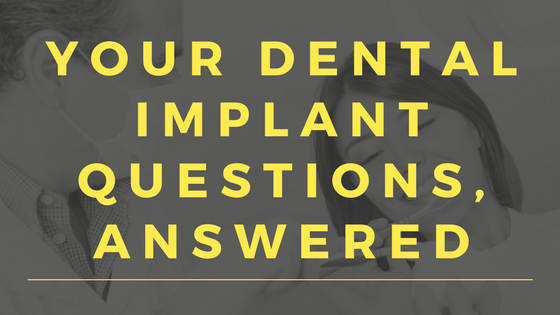
 These conditions may seem unrelated, but new research has found a connection between chronic headaches and sleep apnea and
These conditions may seem unrelated, but new research has found a connection between chronic headaches and sleep apnea and  Once we’ve diagnosed you with TMJ disorder, we’ll discuss your options for treating it. Many patients benefit from an
Once we’ve diagnosed you with TMJ disorder, we’ll discuss your options for treating it. Many patients benefit from an 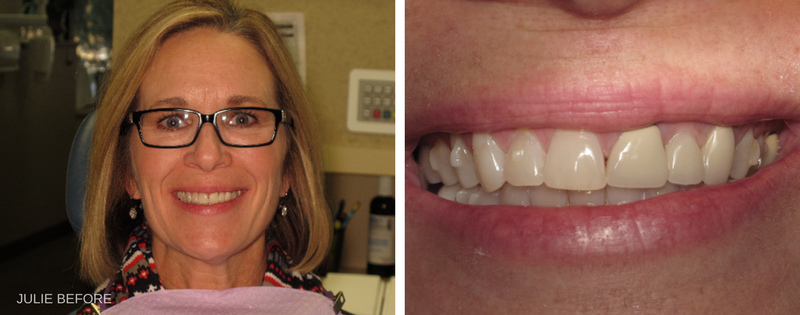
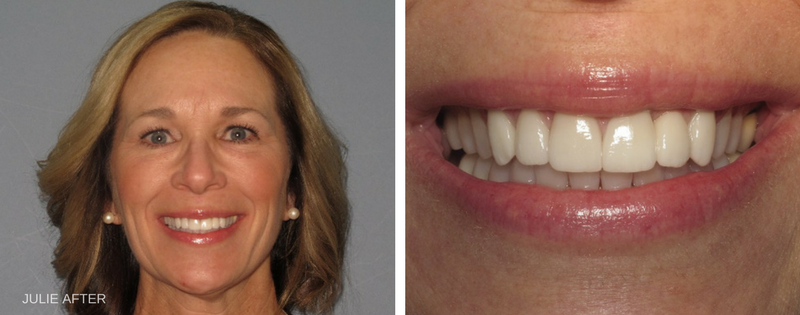

 Teething is a natural process that occurs through age 2-3, when most baby teeth have been pushed through your child’s gums. Erupting teeth can cause discomfort or even pain for your child. If your little one is drooling more than usual, has swollen gums, or a higher than normal temperature, chances are he or she is teething. Alleviate the pain with a cold washcloth or teething ring. Rubbing their gums with a clean finger can also provide relief.
Teething is a natural process that occurs through age 2-3, when most baby teeth have been pushed through your child’s gums. Erupting teeth can cause discomfort or even pain for your child. If your little one is drooling more than usual, has swollen gums, or a higher than normal temperature, chances are he or she is teething. Alleviate the pain with a cold washcloth or teething ring. Rubbing their gums with a clean finger can also provide relief.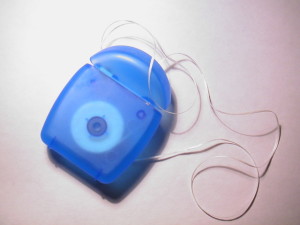 Flossing guilt. The phenomenon is real. We know flossing is important for maintaining dental health yet many of us don’t incorporate it into our daily routine. Worse yet? At regular dental checkups, according to the American Association of Periodontology, up to 25% of us stretch the truth about our flossing frequency. (As if it isn’t evident by our swollen gums from our hasty, pre-visit floss!) Let’s cut out the excuses and commit to investing daily in our dental health by taking a look at guidelines for an easy and effective floss and addressing some common questions.
Flossing guilt. The phenomenon is real. We know flossing is important for maintaining dental health yet many of us don’t incorporate it into our daily routine. Worse yet? At regular dental checkups, according to the American Association of Periodontology, up to 25% of us stretch the truth about our flossing frequency. (As if it isn’t evident by our swollen gums from our hasty, pre-visit floss!) Let’s cut out the excuses and commit to investing daily in our dental health by taking a look at guidelines for an easy and effective floss and addressing some common questions. Gingivitis – inflammation of the gums – is no laughing matter. Typically caused by a bacterial infection, gingivitis is all-too-common and if left untreated can result in periodontitis and tooth loss and increase the risk of diabetes, heart disease, stroke and lung disease. Fortunately, proper care goes a long way in keeping away this unwanted guest. Here’s everything you need to know to identify, treat and ultimately prevent gingivitis.
Gingivitis – inflammation of the gums – is no laughing matter. Typically caused by a bacterial infection, gingivitis is all-too-common and if left untreated can result in periodontitis and tooth loss and increase the risk of diabetes, heart disease, stroke and lung disease. Fortunately, proper care goes a long way in keeping away this unwanted guest. Here’s everything you need to know to identify, treat and ultimately prevent gingivitis. Dr. Jeff and Dr. Elizabeth Eggert or one of our wonderful hygienists will measure the depth of any pockets around your teeth with a small ruler. This is a good way to check for inflammation of the gums. A healthy depth is 1-3mm. We will also examine your dental x-rays to look for evidence of bone loss.
Dr. Jeff and Dr. Elizabeth Eggert or one of our wonderful hygienists will measure the depth of any pockets around your teeth with a small ruler. This is a good way to check for inflammation of the gums. A healthy depth is 1-3mm. We will also examine your dental x-rays to look for evidence of bone loss.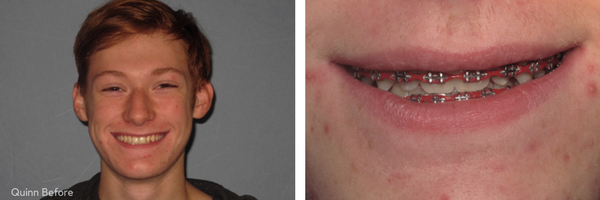
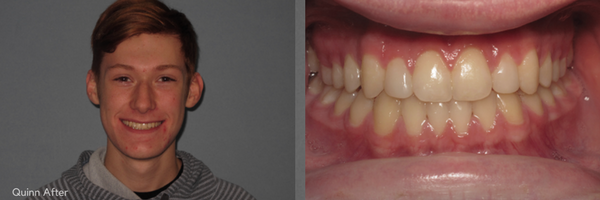
 How Oral Health and Heart Disease Are Connected
How Oral Health and Heart Disease Are Connected